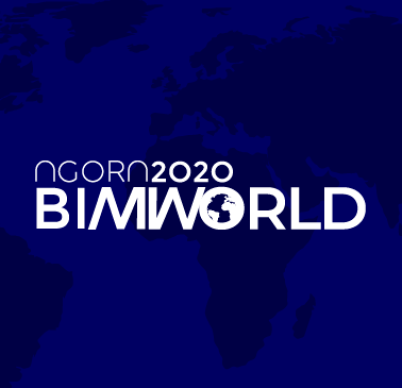
Agora BIM World Sets Record for Attendance at Zigurat’s Global Online Event
Categories

Agora BIM World exceeds all expectations and becomes the most successful English-language event of Zigurat Global Institute of Technology with more than 700 attendees.
On June 30th, Zigurat Global Institute of Technology hosted BIM professionals from all over the world in an global online event that brought together representatives of leading associations and drivers of BIM adoption from 5 different continents.
During 5 hours, BIM community leaders from organizations representing the UK, Spain, Germany, the USA, Canada, Chile and all Latin America, Taiwan, Singapore, the UAE, all Africa and Oceania presented the state of BIM implementation in their region or country. In that sense, the initial goal behind this event -to fill the gap of information that currently exists regarding the level of BIM implementation worldwide- was achieved beyond expectations.
First overviews came from Europe, with the focus on the UK, Spain and Germany. First, Paul Coates from CIAT –an international qualifying body for Architectural Technology that certifies various Zigurat’s BIM master’s programs– shared with the participants how UK BIM implementation has gone so far.
Sergio Muñoz (buildingSMART Spain) concluded that even if there’s no national BIM Mandate in Spain, the methodology is advancing a lot in the country and named several initiatives such as BIMe (BIM dictionary, etc.). Also many public bodies, such as Adif and AENA (strategy 2020-22 accounts for total 4,3 million euros investment in BIM) are already implementing BIM in their projects.
Mirbek Bekboliev (buildingSMART Germany) went into significant detail about the work their chapter carries out in collaboration with other chapters in Europe to develop and catalog use cases through IDM that then arrive to IFC via MV. He also spoke about the professional certification buildingSMART is currently developing.
Next, the spotlight of Agora BIM World shifted towards North America. Jacob d’Albora (DBEI) underlined that while many construction sector professionals are eager to advance the industry because of ROI, increased efficiency, increased safety, increased schedule, the BIM situation in the USA has been frozen for the past years due to the lack of interest from the owners.
Canadian perspective was brought to the audience by Thomas J. Strong (CanBIM) who described the last ten years as a consolidation period for BIM and predicts that the software companies are going to be the big players of the next decade, as the contractors will have to choose which BIM software fits their needs the best.
Jorge Villarroel Bryndzová, the director of BIM Forum Chile introduced the private and public perspectives from Latin America. He concluded that BIM is most used in residential buildings and for the following purposes: visualization throughout the design, elaborating generic plans, and detailed plans.
The next stop on the BIM journey around the world was Asia. Shang-Hsien “Patrick” Hsieh, the professor in the Department of Civil Engineering at National Taiwan University described engineering and consulting companies as the earlier BIM adopters in Taiwan. The construction companies haven’t kept up in that sense and BIM is mostly adopted for the design stage and not the construction stage.
Meanwhile, in Singapore, the Government identified BIM as an important tool for the construction sector in 2010 and by 2016 industry was already able to submit BIM native files to authorities, as Catherine Loke explained.
Issam el-Absi, the co-founder of the UAE BIM Association and academic director of Global BIM Management for Infrastructure Projects, dedicated a presentation to BIM and Digital Transformation accelerators in UAE.
In the following part dedicated to BIM in the African continent, Moses Itanola, Executive Director of BIM Africa spoke about Digital Disruption across the Built Environment.
And finally, the BIM tour ended in Oceania. Richard Choy (Natspec) talked about the BIM Guide they created for Australia to avoid lack of consistency. As an important lesson they’ve learned, Richard suggests that demanding a fully integrated model might be sometimes it can be counterproductive due to differences in ability of the agents involved. Another important step is to learn to distinguish the information that actually adds value.
To enjoy a very BIM summer, you can rewatch the broadcast until July 15th.
Relive the event


